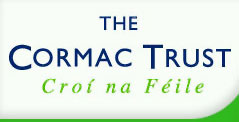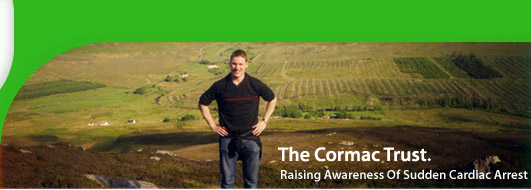ECG screening slashes SCD in young athletes – Corrado v. Thompson debate
Padua, Italy – The introduction of a nationwide preparticipation screening program including ECGs for young athletes in Italy has led to an almost 90% drop in sudden cardiac deaths in one region of the country. Dr Domenico Corrado (University of Padua Medical School, Italy) and colleagues report their findings in the October 4, 2006 issue of the Journal of the American Medical Association [1].
“These data demonstrate the benefit of the current Italian screening program and have important implications for implementing screening strategies for prevention of sudden death in athletes in other countries,” say Corrado et al.
But in an accompanying editorial [2], Dr Paul D Thompson (University of Connecticut, Hartford)-a member of the AHA Committee on Cardiovascular Preparticipation Screening of Athletes-and Dr Benjamin D Levine (University of Texas Southwestern Medical Center, Dallas) say: “Although these results are provocative, they do not definitively prove the value of screening or establish the importance of routine ECGs in the screening process.”
First long-term assessment of program impact
Corrado et al explain that a nationwide screening program for athletes, based on 12-lead ECG, was launched in Italy in 1983. This is the first assessment of the long-term impact of the program on mortality from sudden cardiovascular death, they note.
They analyzed the changes in incidence rates and causes of sudden cardiovascular death among 42 386 young athletes (aged 12 to 35 years) undergoing preparticipation screening in the Veneto region of the country between 1979 and 2004.
During the study period, the annual incidence of sudden cardiovascular death in athletes plummeted by 89%, from 3.6 per 100 000 person-years in 1979-1980 to 0.4 per 100 000 person-years in 2003-2004 (p for trend <0.001), whereas the incidence of sudden death among the unscreened nonathletic population did not change significantly during that time
Compared with the period immediately prior to screening (1979-1981), the relative risk of sudden cardiovascular death was 44% percent lower in the early screening period (1982-1992) and 79% percent lower in the late screening period (1993-2004).
Most of the reduced death rate was due to fewer cases of sudden death from cardiomyopathies.
"All these findings suggest that screening athletes for cardiomyopathies is a lifesaving strategy and that 12-lead ECG is a sensitive and powerful tool for identification and risk stratification of athletes with cardiomyopathies," the authors write.
In a second, parallel study, they identified 879 athletes (2%) during the study period who were disqualified from competition due to cardiovascular causes, including 60 who had cardiomyopathies.
US docs cite limitations, but Italians beg to differ
But in their editorial, Thompson and Levine say there are a number of limitations to this research. First, this study was not a controlled comparison of screening vs nonscreening of young athletes, "but rather a population-based observational study." Second, "the authors attribute their success to the routine use of ECGs, but this component was not examined separately and directly, making it impossible to determine if the ECG added to the other components of the examination," they state.
Third, the annual death rate before the screening program began was 1 per 27 000 athletes, "which is high compared with other [US] studies." Although the death rate did decrease progressively over time, it was in comparison with this seemingly high initial rate, they point out.
However, the Italian doctors beg to differ. In e-mail correspondence with heartwire, Corrado and senior author Dr Gaetano Thiene (University of Padua) say the mortality rate would be higher in the Italian athletes because they were older (up to 35 years) and more likely to be male than the participants generally included in US studies. Both of these demographics "make for a higher risk of sudden death during sports than that of US high school and college athletes," they note.
Thompson and Levine also point out that the lowest annual death rate achieved with screening in this study was 0.4 deaths per 100 000 person-years, which is similar to the rate reported for high school and college athletes in the US between 1983 and 1993. "Such results suggest that the less formal screening process practiced in the US at that time may have been as effective as the more formal Italian program."
But Corrado and Thiene say the mortality rate in the US study referred to above "is likely underestimated due to unavoidable limitations inherent to their retrospective study design."
What to do with those in whom an abnormality is identified
The editorialists are also concerned about the 2% of athletes banned from sports in the Italian study and say this figure is high compared with studies in US high school and college athletes, which have identified potentially lethal cardiac conditions in only 0.4% to 0.5%.
They note that none of the cases of sudden death in the nonathlete group were former athletes who had been barred on cardiovascular health grounds. "The absence of deaths in disqualified athletes . . . raises the question as to whether [they] were truly at risk for an exercise-related cardiac event. It seems unlikely that all of these screened-out athletes immediately adopted a sedentary lifestyle to avoid the risk of sudden death."
But Corrado and Thiene say their parallel study "undoubtedly showed that the downward trend of fatal events from cardiomyopathies paralleled the concomitant increase in the number of athletes with cardiomyopathies successfully identified and hence disqualified from competition over the screening periods."
.
"Identification of young individuals with cardiomyopathies is lifesaving not only due to restriction from competitive sports, but also thanks to the subsequent clinical management aimed to prevent cardiac arrest (close clinical follow-up, beta-blocker therapy, and ICD)."
And the Italian doctors note that the number considered at risk of lethal sudden death in their study was in fact similar to the figures quoted for the US (not more than 0.5%) and agree that excluding many other individuals with nonlethal diseases from competition "is more arbitrary and not as productive."
They conclude: "Our study may have significant implications for designing more focused screening strategies as well as for modifying disqualification criteria and management of young competitive athletes with cardiovascular diseases."
Screening: Not always a black-and-white issue
"It's hard to convince people there is a downside to screening, but there is," Thompson told heartwire. He illustrates the dilemmas faced by doctors with a personal tale.
"I saw a young boy recently, a promising football player and star high school athlete, whose father played sports all his life but was found to have hypertrophic cardiomyopathy at age 45. We screened the boy and found he had the same cardiomyopathy. What do we do now? The mom said she wishes they'd never had him screened. She was crying, the dad was crying, and the kid was crying, saying that he lives for football. I'm worried about the kid being suicidal."
Thompson says such an individual is unlikely to have any symptoms but could suffer sudden cardiac death. "What I will probably do is put in an ICD and say you can play some sports. But that's a $35 000 piece of equipment. Will he ever need it? We don't know."
Sources
1. Corrado D, Basso C, Pavei A, et al. Trends in sudden cardiovascular death in young competitive athletes after implementation of a preparticipation screening program. JAMA 2006; 296:1593-1601.
2. Thompson PD and Levine BD. Protecting athletes from sudden cardiac death. JAMA 2006; 296:1648-1650.
By Lisa Nainggolan
(October 3, 2006 )


